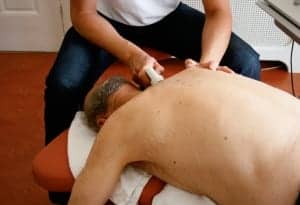In a recent study, vascular surgeons at Beth Israel Deaconess Medical Center (BIDMC) in Boston reviewed 7 years of patient records to determine the likelihood of limb loss due to specific symptoms.
Per their research, the surgeons determined that 91% of patients with resting leg pain, 86% of patients with ulcer, and 78% of patents with gangrene were likely to keep their limbs, according to a media release from Society for Vascular Surgery.
“Diabetics getting vein grafts typically would have been told they had a 50% chance of keeping their limbs. However, now using our lifelong limb salvage calculation we know they actually had an 88% chance of living out their lives with the affected limb intact,” states BIDMC vascular surgeon Frank W. LoGerfo, a member of the Society for Vascular Surgery, in the release.
This new way of calculating risk could be encouraging for patients, according to LoGerfo. Previously, he could tell patients what their 10-year chances were, but “I had no precise measure of that outcome. I knew I was not seeing 50% of my patients returning for amputation. Over the years, that prompted me to look for a new way to measure their outcomes,” he adds in the release.
Lead author Katie Shean, MD, as well as Peter A. Soden, MD, are presenting the findings from the study—“Lifelong Limb Salvage: A Patient-Centered Description of Lower Extremity Arterial Reconstruction Outcomes”—at the Society for Vascular Surgery’s 2016 Vascular Annual Meeting in Washington, DC.
Losing a limb is a life-changing event,” Shean says in the release. “It can be intimidating for patients to think about how they would get around and do basic tasks for themselves. It’s not just a loss of a major part of their body, it’s also the loss of independence.”
“We tell patients, ‘We can now tell with more certainty the likelihood that you will keep your limb, and that plays a major role in your quality of life and how long you will live,'” Shean adds.
[Source(s): Society for Vascular Surgery, PR Newswire]




